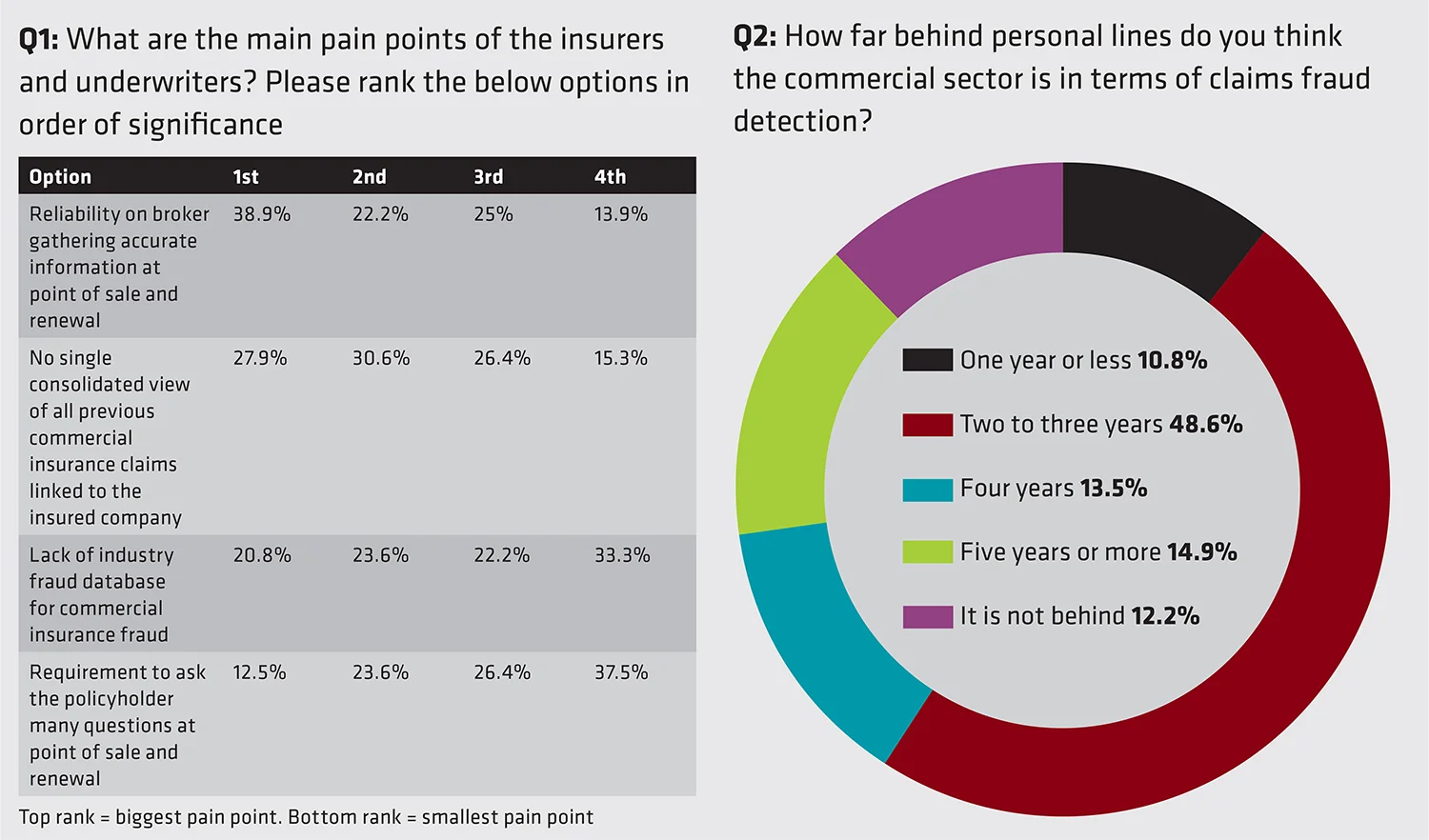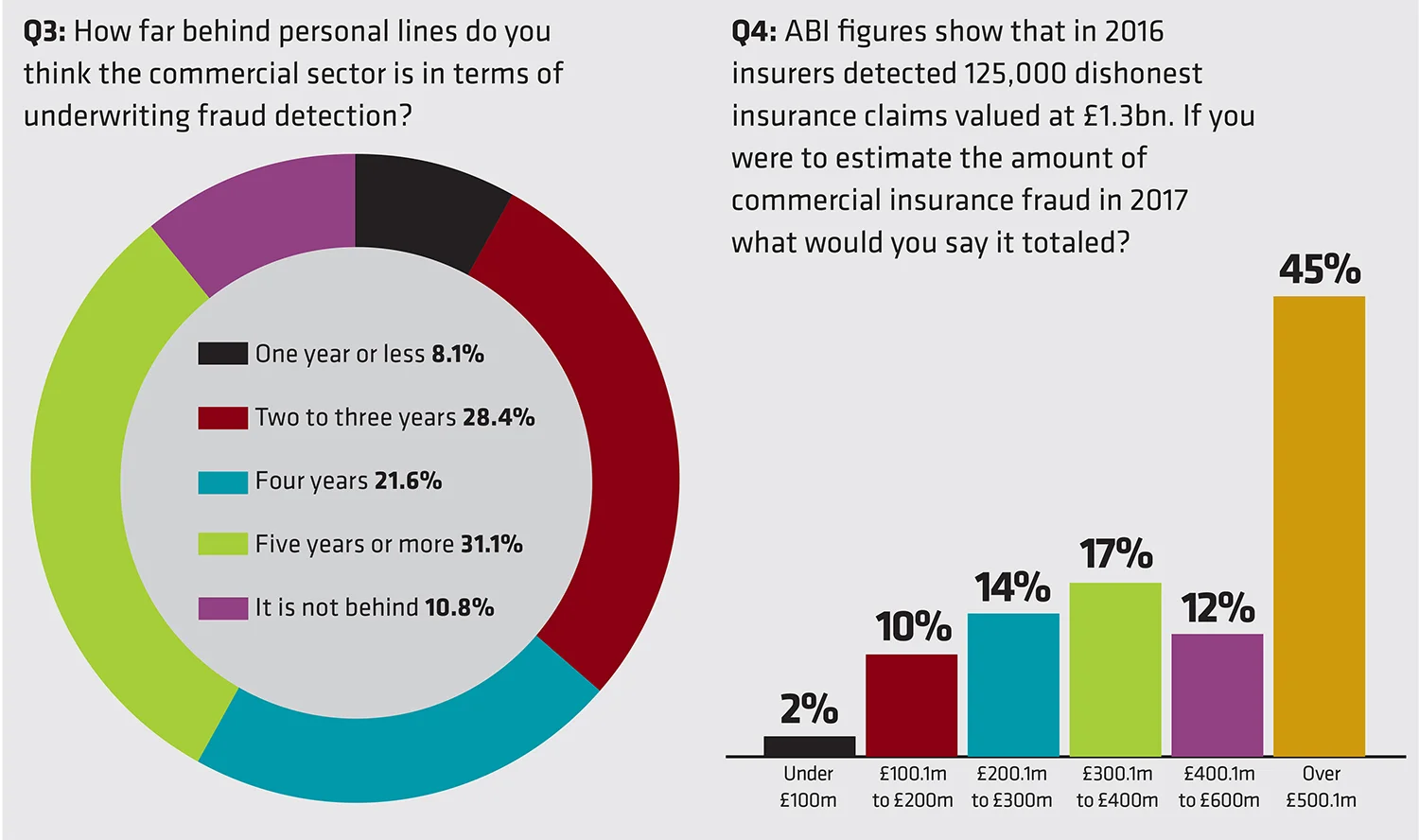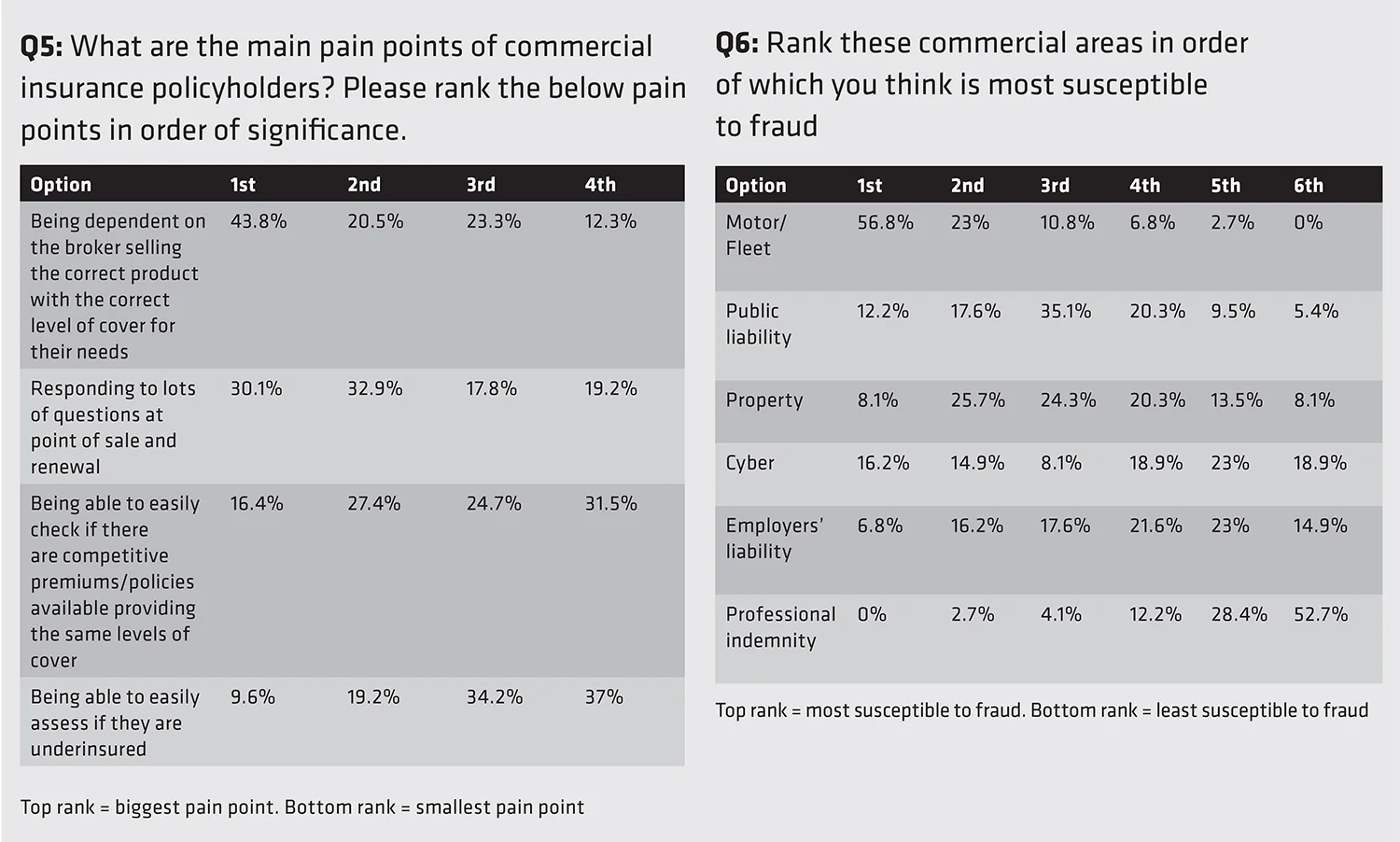
This article was paid for by a contributing third party.

Commercial insurance fraud: Where future priorities lie

Need to know
- Better business intelligence to support commercial customer profiling at point of sale advocated to help combat commercial fraud
- Pre-population of commercial policy application and renewal forms would help remove the risk of human error both in interpretation of details and re-keying of information
- Cyber security education will be key to managing the threat in a growing commercial market

The results of the recent Commercial Insurance Fraud Survey commissioned by Crif Decision Solutions in partnership with Post made interesting reading.
The survey, completed by commercial insurance professionals operating primarily through brokers in the motor, property and liability sectors, highlighted some common key challenges. When asked to score the ‘pain points’ of insurers and underwriters, perhaps not unsurprisingly, the lack of a single consolidated view of all previous commercial insurance claims linked to a policyholder featured high on the agenda and was ranked as the second major concern for respondents receiving 27.9% of votes [see Q1]. This was closely followed in third position by the commercial market’s inability to share data with no existing commercial insurance fraud database gaining 20.8% of respondent votes. The top scoring ‘pain point’ for commercial insurers, receiving 38.9% of votes, was their reliance on their brokers to gather accurate information at point of sale and renewal, in order that risk could be appropriately priced. And the remaining 12.5% of votes went to the requirement to ask the policyholder so many questions at point of sale and renewal.
Commercial lines v personal lines: The gap
Comparing this situation to the personal lines insurance market, it is easy to both recognise and acknowledge the frustrations and challenges facing the commercial market. Personal lines insurers have a wide range of commercial and industry databases, including for example the Claims and Underwriting Exchange, Motor Insurance Database and Motor Insurance Anti-Fraud Theft Register, which they can access and interrogate to cross check and validate claims data and gain an holistic, consolidated view of the customer’s claims history.
Customer profiling is also common place in the personal lines market at point of sale and renewal, with insurers using customer data to support them in establishing and competitively pricing risk and protecting their bottom line. Personal lines insurers also have access to and the support of industry collaborations like the Insurance Fraud Bureau and the Insurance Fraud Register.
It is understandable, therefore, that 87.8% of respondents felt the commercial sector was behind the personal lines sector in terms of claims fraud detection, with 48.6% saying by two to three years [See Q2]. The result was even more extreme when participants were asked how far behind personal lines the commercial sector was in terms of underwriting fraud detection, with 31.1% stating five years or more [See Q3]. It was thus no surprise that respondents felt that brokers could play a far greater role in helping combat commercial insurance fraud with 47% stating brokers could do a lot more in terms of sharing data and information. When asked to consider the overall scale of the problem faced by the commercial sector, 45% of respondents estimated that commercial insurance fraud in 2017 would total over £500m [See Q4].
Turning attention to the perceived difficulties for commercial insurance policyholders, 44.8% of respondents cited their dependence on the broker selling them the correct product with the correct level of cover for their needs [See Q5]. Ranked as the highest scoring perceived issue for policyholders, this lack of accurate information and lack of clear communication between insurers and brokers is an equally pressing problem.

Closing the gap now
So what can be done with the tools available now to enable the commercial insurance sector to proactively tackle fraud?
There are tools available to help address the top ‘pain point’ of reliance on brokers to gather accurate information at point of sale and renewal, in order that risk can be appropriately priced. For example, better business intelligence to support commercial customer profiling at point of sale and renewal allows insurers and/or their brokers to uncover and understand information about any business and its stakeholders including company reports and documents filed at Companies House, director searches, ownership structure, mortgages and charges, bad debt judgments, financial health checks and credit ratings. Such services can enable insurers to establish the identity and financial status of any company, business, director or sole trader in the UK or across the world. Access to this accurate business intelligence can support commercial insurers in making more informed business decisions.
To further support accuracy, sharing of information and enhance communication between commercial insurers and their brokers, a central location to manage, perform and streamline risk management with real-time data integration to optimise customer verification and provide a comprehensive view of the customer is beneficial.
Pre-population of policy application and renewal forms via accurate data sources is extensively used in the personal lines sector and could be adopted in the commercial sector. This removes the risk of human error both in interpretation of details and re-keying of information, while the customer experience is improved being both swifter and less onerous and operational costs can be reduced through improved business efficiency.

Prioritising the future
When it comes to future priorities, respondents cited the top step that could be taken to improve commercial fraud detection was an industry database for commercial insurance. A shared commercial claims database would help to provide a single consolidated view of a claimant and their claim history and improve data validation.
To realise this priority, industry collaboration is required supported by workshops and round tables organised to establish agreed industry needs. A closed user group must be formed for ongoing feedback as a customised system is built based on the specific requirements of commercial insurers and their brokers. Such an initiative must be led by an organisation with experience of similar projects and the appropriate market expertise.

Emerging threats
Commercial insurance covers a multitude of areas and respondents were asked to rate those they felt were most susceptible to fraud. Using a weighting method, in first position was motor/fleet followed by public liability with property ranked third. Cyber entered the ranking in fourth position with employer’s liability and professional liability in fifth and sixth place [See Q6].
In the Mintel Commercial Insurance Report published in 2016, cyber risk was not mentioned. Fast forward to 2018 and it has now been ranked as a fraud risk area above EL which the market has already previously recognised to be a target for organised fraud. It could also be argued that as more cyber insurance is written the perceived fraud risk will make its way higher up the industry score card.
Cyber security education will be key to managing the threats which come in the forms of current employees, former employees, competitors, collaborators, IT service providers, activists and criminal organisations.
The proactive protection of online company information with audits, continuous monitoring and risk alerts will become standard business practice to avoid the theft of company data, the compromise of company owned web domains and the avoidance of data breaches. Commercial insurers providing cyber insurance will be seeking evidence that such risk mitigation measures are in place and active as they look to grow their book of business profitably and reduce claim and fraud exposure.
Read the second article in this series: Commercial insurance fraud: Improving detection
Sponsored
Copyright Infopro Digital Limited. All rights reserved.
You may share this content using our article tools. Printing this content is for the sole use of the Authorised User (named subscriber), as outlined in our terms and conditions - https://www.infopro-insight.com/terms-conditions/insight-subscriptions/
If you would like to purchase additional rights please email info@postonline.co.uk
Copyright Infopro Digital Limited. All rights reserved.
You may share this content using our article tools. Copying this content is for the sole use of the Authorised User (named subscriber), as outlined in our terms and conditions - https://www.infopro-insight.com/terms-conditions/insight-subscriptions/
If you would like to purchase additional rights please email info@postonline.co.uk
